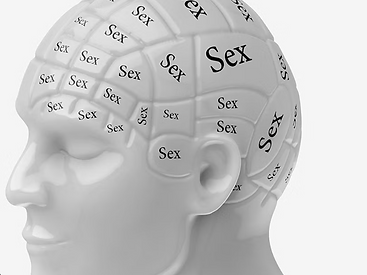
Triquetra Etkinlikleri

Addictions Counseling
What is addiction?
Addiction is a chronic (lifelong) condition that involves compulsive seeking and taking of a substance or performing of an activity despite negative or harmful consequences. Addiction can significantly impact your health, relationships and overall quality of life. It’s crucial to seek help as soon as you develop signs of addiction.
Is addiction a disease?
Yes, addiction is a disease — it’s a chronic condition. The American Society of Addiction Medicine (ASAM) defines addiction as a chronic brain disorder. Addiction doesn’t happen from having a lack of willpower or as a result of making bad decisions. Your brain chemistry changes with addiction.
What are the types of addiction?
There are two main groups of addiction:
-
Substance addictions (substance use disorders).
-
Non-substance addictions (behavioral addictions).
Substance addictions
Healthcare providers and the medical community now call substance addiction substance use disorder. The American Psychiatric Association’s Diagnostic and Statistical Manual of Mental Disorders (DSM-5) has concrete diagnostic criteria for substance use disorders. Substances are drugs that have addiction potential. They can be prescription medications or non-medical drugs and include:
-
Alcohol.
-
Caffeine.
-
Cannabis (marijuana).
-
Hallucinogens, such as PCP and LSD.
-
Hypnotics, sedatives and anxiolytics (anti-anxiety drugs), such as sleeping pills, benzodiazepines and barbiturates.
-
Inhalants, such as paint thinners, aerosol sprays, gases and nitrites (poppers).
-
Prescription and non-prescription opioids, such as codeine, oxycodone and heroin.
-
Prescription and non-prescription stimulants, cocaine and methamphetamine.
-
Tobacco/nicotine, such as smoking cigarettes and electronic cigarettes (e-cigarettes or vaping).
While these substances are very different from each other, they all strongly activate the reward center of your brain and produce feelings of pleasure. Use of these substances can lead to substance use disorders (SUDs) — but not always. SUDs can be mild, moderate or severe. Addiction is the most severe form of a substance abuse disorder.
Non-substance addictions
Behavioral addictions can occur with any activity that’s capable of stimulating your brain’s reward system. Behavioral scientists continue to study the similarities and differences between substance addictions, behavioral addictions and other compulsive behavior conditions like obsessive-compulsive disorder (OCD) and bulimia nervosa.
The DSM-5 currently only recognizes gambling disorder as a diagnosable behavioral addiction in the subsection of “non-substance-related disorders” in the category of “substance-related and addictive disorders.” The DSM-5 doesn’t currently include other behavioral addictions due to a lack of research on them. However, any activity or habit that becomes all-consuming and negatively impacts your daily functioning can cause significant mental, social and physical health issues, as well as financial issues in some cases.
Examples of potentially addictive activities include:
-
Gambling.
-
Eating.
-
Exercising or dieting.
-
Shoplifting or other risky behaviors.
-
Having sex.
-
Viewing pornography.
-
Video gaming (internet gaming disorder).
-
Using the internet (such as on your phone or a computer).
What is the most common addiction?
Alcohol use disorder is the most common substance addiction in the United States, followed by nicotine and marijuana.
What are the signs of addiction?
Symptoms of addiction vary from person to person and based on the substance or activity. In general, signs include:
-
Inability to stop: People may use a substance or engage in harmful addictive behavior even if they want to stop. They may have tried multiple times to reduce the substance use or behavior but can’t. They may also lie to their loved ones about it or try to hide it.
-
Increased tolerance: Over time, they may need more of the substance or activity to feel the same euphoric effects as they did before.
-
Intense focus on the substance or activity: People with addictions become pathologically preoccupied with the substance or activity. They may feel that the addiction has taken over their lives, as they spend more and more time craving, obtaining and thinking of the subject of the addiction.
-
Lack of control: They may feel like they’ve lost complete control over their substance use or activity and often feel helpless. They may often feel guilty, depressed and/or overwhelmed by their addiction and how much it’s impacted their lives.
-
Personal problems and health issues: Addiction impacts all aspects of their lives, including their physical health, mental health, personal relationships and career. They may have issues fulfilling responsibilities at work, school or home due to substance use or the activity. Again, despite knowing the detrimental effects their addictions are having on them, they can’t stop.
-
Withdrawal: People with addiction may experience emotional and physical withdrawal symptoms when they stop using. Physical symptoms include shaking, sweating or vomiting. They may also become anxious or irritable.
What causes addiction?
There’s not a single cause of addiction — it’s a very complex condition. A significant part of how addiction develops is through changes in your brain chemistry. Substances and certain activities affect your brain, especially the reward center of your brain.
Humans are biologically motivated to seek rewards. Often, these rewards come from healthy behaviors. When you spend time with a loved one or eat a delicious meal, your body releases a chemical called dopamine, which makes you feel pleasure. It becomes a cycle: You seek out these experiences because they reward you with good feelings. Substances send massive surges of dopamine through your brain, too, as well as certain activities, like having sex or spending money. But instead of motivating you to do the things you need to do to survive (eat, work and spend time with loved ones), such massive dopamine levels can have damaging effects on your thoughts, feelings and behavior. This can create an unhealthy drive to seek more pleasure from the substance or activity and less from healthier activities.
Over time, the substances or activities change your brain chemistry, and you become desensitized to their effects. You then need more to produce the same effect. For some substances, such as opioids, the withdrawal symptoms are so severe that they create significant motivation to continue using them.
Other factors that contribute to the development of addictions include:
-
Genetics: Studies show that genetic factors are responsible for 40% to 60% of the vulnerability to any SUD. If you have a first-degree relative (biological sibling or parent) with a substance abuse disorder, you’re more likely to develop one. Scientists are working to locate specific genes that may contribute to this vulnerability.
-
Mental health conditions: There’s a strong link between addiction and mental health conditions, such as depression, post-traumatic stress disorder (PTSD) and bipolar disorder. About half of the people who experience a mental health condition will also experience a substance abuse disorder SUD and vice versa.
-
Environmental factors: Access to substances is a particularly significant environmental risk factor. Factors that increase the extent of exposure and the opportunity for substance use include the use of substances by a member of your household or your peers and being prescribed medications that can be misused, such as opioids or stimulants. Adverse childhood experiences (ACEs) also play a role. ACEs are stressful or traumatic events during childhood. ACEs are strongly related to the development of a wide range of health problems throughout a person’s lifespan, including addiction.
What Is Addiction Counseling?
Addiction is one of the most common behavioral health conditions impacting millions of Americans every day. One of the most impactful strategies to treat addiction is substance use counseling, also called addiction counseling. Addiction counseling is a scientifically researched and developed treatment for those with substance use disorders. It is generally done with an educated and experienced counselor who provides direct feedback and education about the disease of addiction and the recovery process. Counselors are an important part of addiction therapy, and their role and involvement in the treatment process is instrumental to recovery.
How Does Counseling Work?
The process of substance use counseling is similar to other types of therapy. First, they both involve a counselor and an individual building a safe relationship through conversation, learning about the individuals’ experiences with substances, understanding their goals, and developing a plan of action to help meet those goals. Both addiction counseling and therapy assist with learning how to establish healthy relationships in recovery by reconnecting with important family/friends or through peer support network building.
Everyone has different needs, which means the counseling process will look different from person to person. Still, it uses the same framework to develop a safe method of making progress into recovery-oriented living. It is important to note that while counseling can provide education and different strategies to improve overall wellness, it does not provide advice or instructions on how to live life, so the decision on what happens in a session is always the individual’s.
When starting addiction counseling, the counselor will ask a variety of questions focused on things like family history, childhood experiences, life skills development, and other life experiences involving substance use. They will also review medical history, mental health conditions, family support, relationship dynamics, relapse potential, and external stressors such as finances or legal system concerns.
After this initial assessment, the addiction counselor will begin discussing goals the individual would like to achieve and potential needs that the counselor has observed. When all these concepts are incorporated together, a treatment plan is established. The treatment plan is the list of goals that will be addressed during the treatment period.
Treatment plans for substance use disorders are often developed using the American Society of Addiction Medicine (ASAM) framework. This framework uses six dimensions that help to ensure every important area of one’s life is being assessed and having proper goals set if needed. Once the treatment plan is in place, the counselor and individual can begin to work on the identified goals.
Working on these goals is usually done through individual and group therapy settings. Group therapy for substance use is one of the most useful types of therapy, as it provides the greatest ability to build positive sober relationships while also not feeling alone. Most counselors will perform individual and group therapy with their clients to help find the best mixture of topics and issues to be addressed.
Types Of Counseling
Beyond group therapy, individual therapy can incorporate various treatment models based on the counselor’s training and credentials. Some of the more commonly used therapies include some of the following.
Biofeedback And Neurofeedback
Biofeedback and neurofeedback therapies use active displays of an individual’s physical vital signs, including blood pressure, respiration rate, and pulse. These vitals are directly connected to managing discomfort, including anxiety and stressful situations. An addiction counselor can use these therapies to help teach individuals that how they feel physically can impact how they feel emotionally. Through conditioning, the counselor can help improve their patient’s control over their physical and vital signs to improve their emotional regulation.
Cognitive Behavioral Therapy (CBT)
CBT is a long-standing, evidence-based treatment that has proven effective in helping addiction and mental health conditions. CBT has many different forms; however, they primarily focus on the relationships between thoughts, emotions, and behaviors. By learning how each interacts with the other, the individual can improve their experience by managing each thought, emotion, and behavior more effectively. This is commonly used when working through substance use triggers and negative thoughts.
Dialectical Behavior Therapy (DBT)
DBT is another long-standing, evidenced-based model similar to CBT. It works for various substance use and mental health conditions by teaching individuals how to manage discomfort and distress while it occurs at the moment. In addition, DBT helps teach coping strategies to manage stress and regular emotions healthily. Again, this can impact substance use, where stress tolerance is often very low in early recovery.
Motivational Interviewing (MI)
MI is a therapy that focuses on finding the motivation to complete the goals that someone has identified. In addition, it works on recognizing what stage of change someone is currently in and what they would need to take the next step in finding their goal. MI is often found in substance use treatment as motivation is a tricky topic for many, with external factors often placing people in treatment in the first place. Finding an internal factor is crucial in recovery, which counselors utilizing MI work to establish.
Eye Movement Desensitization And Reprocessing (EMDR)
This therapy was designed to treat and address trauma-based conditions. It works by utilizing bilateral stimulation (eye movements) and working through a system of memories connected to that trauma. EMDRis structured and standardized, which requires additional training on the counselor’s part. It is helpful for those who have experienced trauma at any age and has other “protocols” which allow it to be used in treating substance use disorders, often through reducing triggers for substance use. Many people who struggle with a substance use disorder also have underlying trauma concerns.
Meditation, Guided Imagery, And Mindfulness
Mindfulness is an umbrella term for many of these exercises, including meditation and guided imagery. These are fewer therapies and more techniques in multiple therapy practices, especially DBT. They are used primarily to proactively reduce anxiety symptoms and improve an individual’s ability to be present. The use of mindfulness in recovery has been researched for many years, and many have found it helpful during recovery.
Holistic Therapies
In addition to traditional treatment methods, holistic therapy helps patients practice introspection and learn healthy coping skills. It also gives patients who are not comfortable opening up in traditional therapy sessions a way to communicate their deepest fears and issues in a non-threatening manner. A few forms of holistic therapy that can be useful in treating addictions are yoga, art therapy, music therapy, and equine therapy.
















